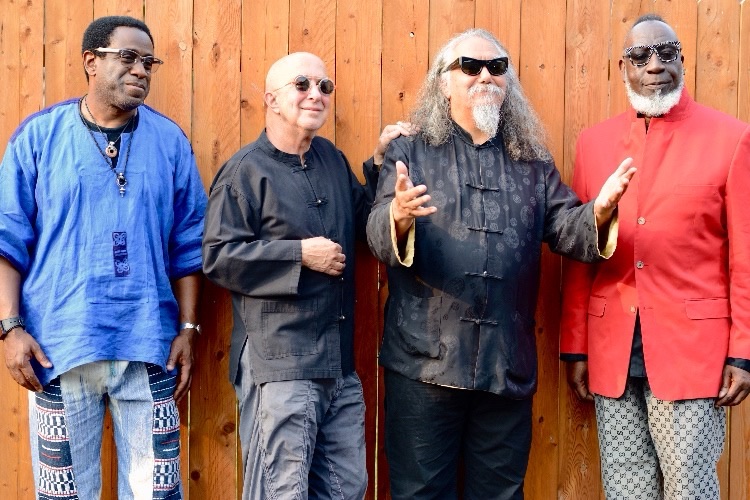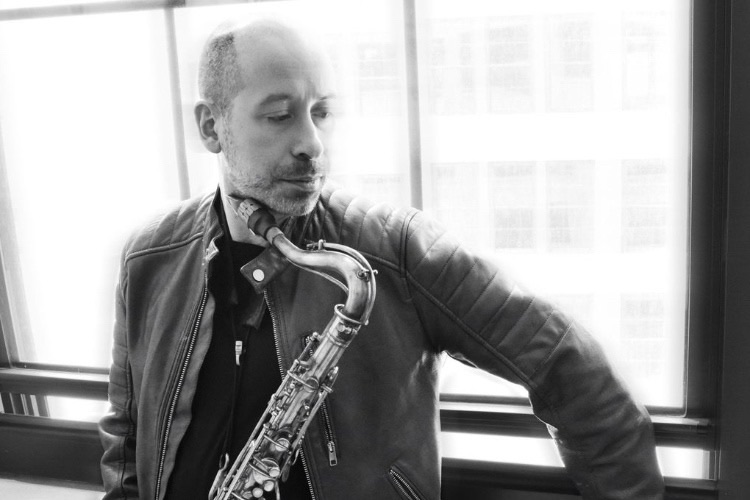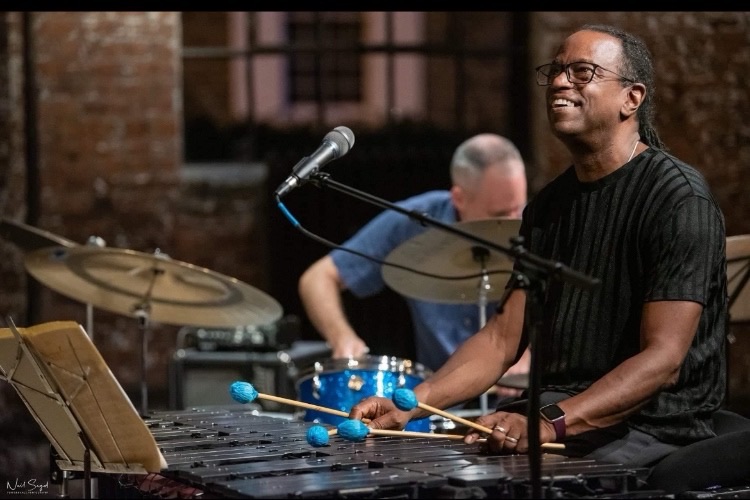Review: ‘Quantum Blues’
|
Getting your Trinity Audio player ready...
|
There are widely publicized and wildly anticipated supergroups, and then there are those – at least a few – that sprout suddenly without heralding fanfare. The Quantum Blues Quartet is the epitome of the latter, joining four iconic players who came together in New York in 2024 for a day-long session. They are avant-garde jazz virtuoso and extreme guitarist Tisziji Muñoz, a more familiar name to all of us, keyboardist Paul Shaffer of Letterman and SNL fame, the incomparable, funk-driven electric bassist Jamaaladeen Tacuma, and two-time Grammy winning Living Colour drummer, Will Calhoun. The four sat down to play all day without preparation, charts, or ostensible plans for the resulting Quantum Blues (Ropeadope, 2025).
Shaffer had called Muñoz his mentor since 1969, and although the two have recorded together previously, it was the guitarist’s wife who urged Shaffer to bring together a full band. Remarkably, the 78-year-old Muñoz had never previously met Tacuma or Calhoun. Muñoz is a spiritual artist who draws praise from many progressive musicians and has a guitar sound best described perhaps as a cross of Jimi Hendrix, John McLaughlin, and John Coltrane. In previous writings, I have described the blues guitarist Ronnie Earl as “the John Coltrane of the guitar” because of his spiritual approach, but Muñoz ventures much further into the outer realms. His career has flourished in the underground of sorts, with many becoming aware of him through the recent unearthing of Pharaoh Sanders’ Harvest Time (Luaka, 2023) and the subsequent tour behind that landmark album.
Despite his decreased notoriety, Muñoz’s talent is well-documented. As Shaffer notes, he has “played with all the great guitar players, from Eric Clapton to Van Halen to Santana and Jeff Beck, and nobody plays guitar the way Tisziji Muñoz does. He is very spiritual, and as a guitar player, he swings wild.” Henry Kaiser offers, “Tisizji does not reach into a bag of licks and tricks to create music, as most guitarists do. On the contrary, he goes OUT THERE SOMEWHERE and channels energy that is converted into guitar sounds by his physical being.” Muñoz is also an accomplished author who has written on his own Heart-Fire-Sound that embraces the subjects of spirituality, genius, creativity, and time mastery. His manner of playing and written works have transformed the way many musicians think and play music. In short, it’s from the inside out. You can read more about the recording in Rob Shepherd’s interview with both Muñoz and Shaffer.
Trusting that most readers are more familiar with the other three collaborators, we’ll jump to the music, which is likely lengthy jams edited into digestible five or six-minute tracks. Each track has ‘Blues’ in the title, but don’t expect any kind of twelve-bar blues or conventional structures. This is at a more abstract and advanced level. Hence, the title Quantum Blues. As Shaffer says, “The music must be heard to be believed.” In that sense, written words can’t possibly do it justice, but we’ll do our best to give some context. Don’t be tempted to sample individual tracks, as this journey OUT can only be fully appreciated by listening to it in its entirety.
Early moments of the album are very guitar-focused as the band lets Muñoz lead the way as they get more comfortable with him as it evolves. From the outset, the guitarist launches into his fiery, exploratory lines spurred on by thunderous bass and drums in “Who Is Not the Blues.” In “Good News Blues,” which begins with a fanfare of power chords, Shaffer joins on piano, adding support to Muñoz’s labyrinthine path. “Mama’s Blues” is filled with discordant, resonating chords to begin, but the guitarist goes into orbit and keeps pushing outward. Calhoun is a whirlwind on his kit. “Swami Lama Blues” features Shaffer’s otherworldly organ while “Heavenly Blues” is more ethereal, imbued by Shaffer’s sweeping piano and Tacuma and Calhoun stepping forward. The quartet plays full tilt with Shaffer on organ and a locked-in bass-drum tandem on the vigorous excursion, “Be Home Before Now Blues,” which evaporates into a blur of electronics. The aptly titled “Losing One’s Mind Blues” has the guitarist wailing to no abandon before yielding to Calhoun’s blistering solo, the first for a quartet member other than Muñoz, seven tracks in.
If you ever believed that guitar couldn’t go to a higher level than Hendrix of Mahavishnu, this collaborative session shatters any such notion.
‘Quantum Blues’ is available now on Ropeadope Records. It can be purchased on Bandcamp.




A great review. I’ve seen Tisziji perform many times and know him, his music and writings very well. What he does is unique and powerful, even transformative.